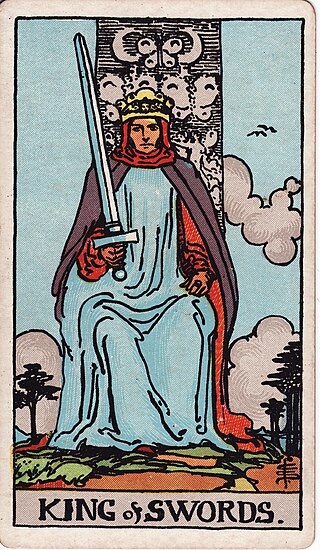Top Qs
Timeline
Chat
Perspective
Minor Arcana
Type of occult tarot cards From Wikipedia, the free encyclopedia
Remove ads
The Minor Arcana, sometimes known as the Lesser Arcana, are the suit cards in a cartomantic tarot deck.

Ordinary tarot cards first appeared in northern Italy in the 1440s and were designed for tarot card games.[1] They typically have four suits each of 10 unillustrated pip cards numbered one (ace) to ten, along with 4 court cards (face cards). Tarot games are still widely played in central and southern Europe; French Tarot is the second most popular card game in France after Belote.
By contrast, cartomantic tarot cards emerged in France in the late 18th century, popularised by occultists such as Etteilla. The terms "Major" and "Minor Arcana" originate with Jean-Baptiste Pitois (1811–1877), nom de plume Paul Christian.[2]
In their contemporary versions, the Minor Arcana are often illustrated—a convention popularized by the Rider–Waite tarot in 1910. Used in a tarot card reading in conjunction with the Major Arcana, the cards of the Minor Arcana suggest subtleties and details, and signify day-to-day insights.[3]
Cartomantic tarot cards derived from Latin-suited packs typically have a Minor Arcana of 56 cards, with 14 cards in each suit: Wands (alternately batons, clubs, staffs, or staves), Cups (chalices, goblets, or vessels), Swords (or blades), and Coins (pentacles, disks, or rings). The four court cards are commonly: page (jack or knave), knight, queen, and king. Some variations have princess and prince cards replacing the page and knight cards; the historical Visconti-Sforza Tarot expands the court with two additional cards: the damsel and the mounted lady. While the historical Tarot of Marseilles contains 56 cards, later packs based on the French suits of clubs (♣), hearts (♥), spades (♠), and diamonds (♦) have only three court cards per suit, with a jack in addition to the queen and king.
Remove ads
Symbolism
In divinatory, esoteric and occult tarot, the Minor Arcana are believed to represent relatively mundane features of life. The court cards may represent the people whom one meets.
Each suit also has distinctive characteristics and connotations commonly held to be as follows:[4]
Remove ads
Gallery of card suits
Illustrations from the Rider–Waite tarot, the most popular amongst English speakers, divided by suit and arranged in ascending order of face value.
Cups
Pentacles
Wands
Swords
Remove ads
Planetary associations
In the Hermetic Order of the Golden Dawn, number cards are associated with planets, corresponding to their placement in Kabbalah.[5]
- Threes - Saturn
- Fours - Jupiter
- Fives - Mars
- Sixes - Sun
- Sevens - Venus
- Eights - Mercury
- Nines - Moon
- Tens - Earth
References
External links
Wikiwand - on
Seamless Wikipedia browsing. On steroids.
Remove ads
























































